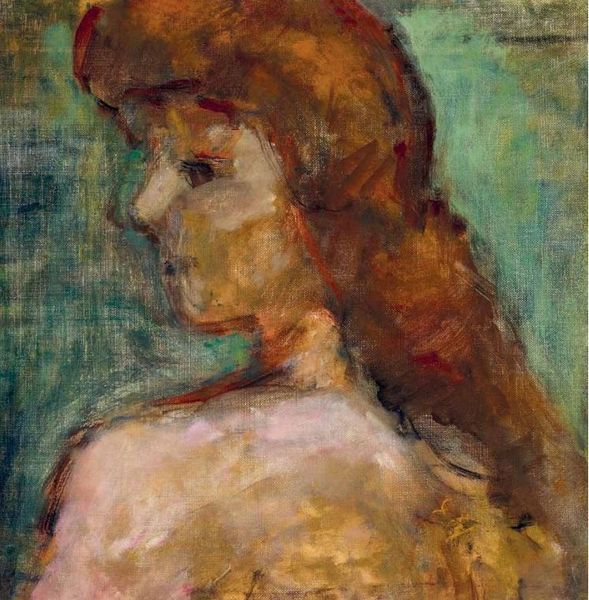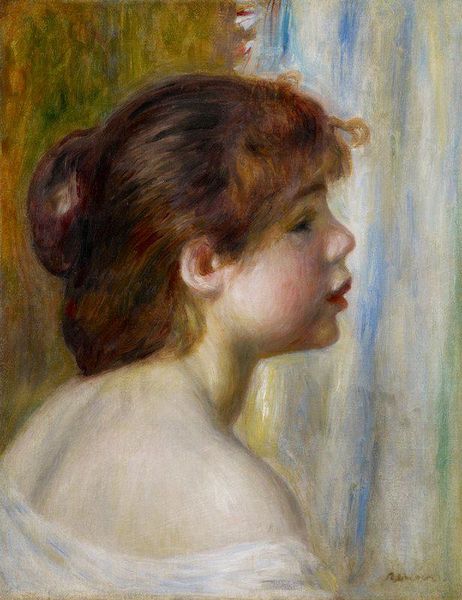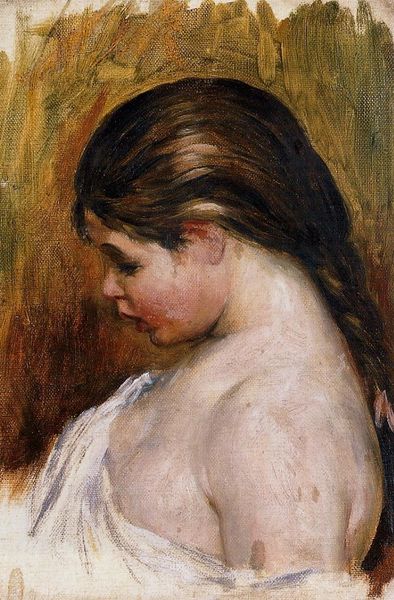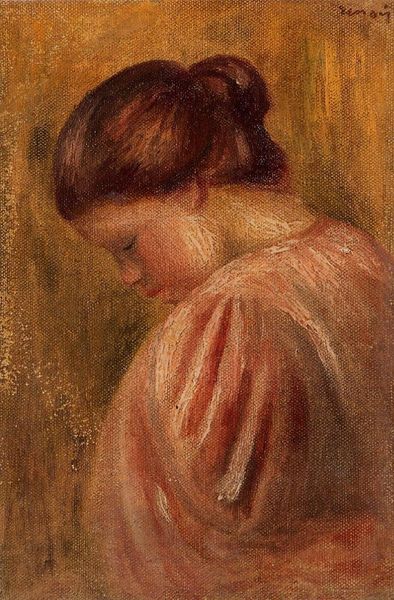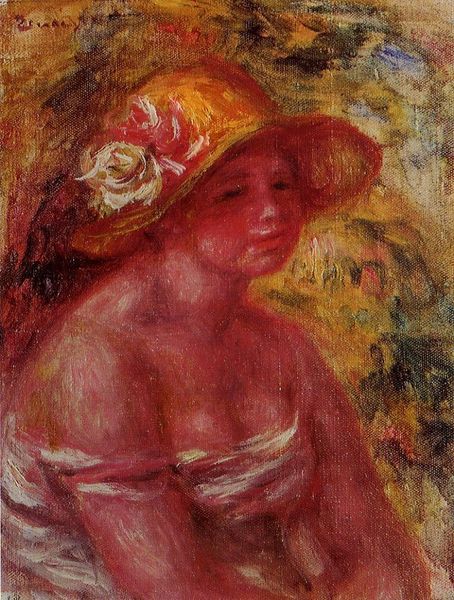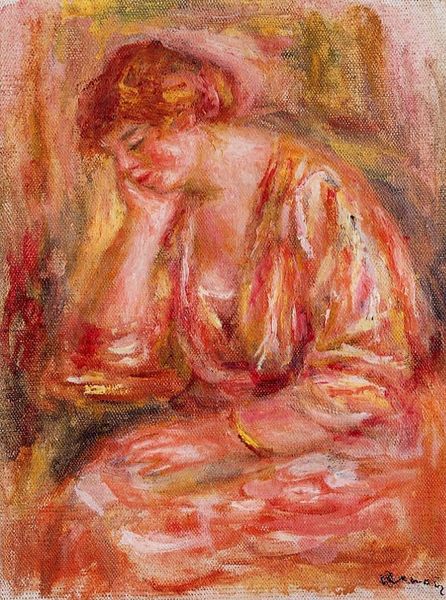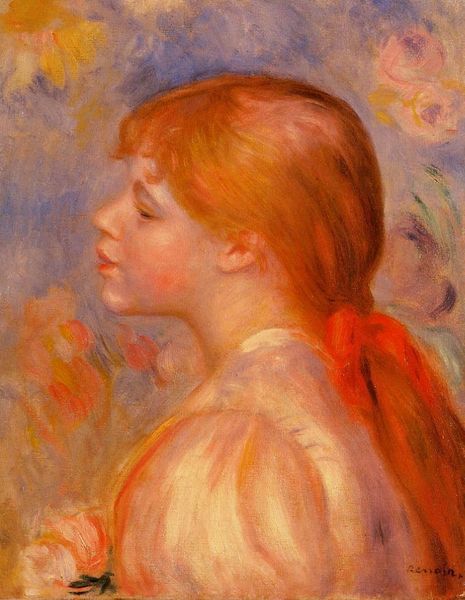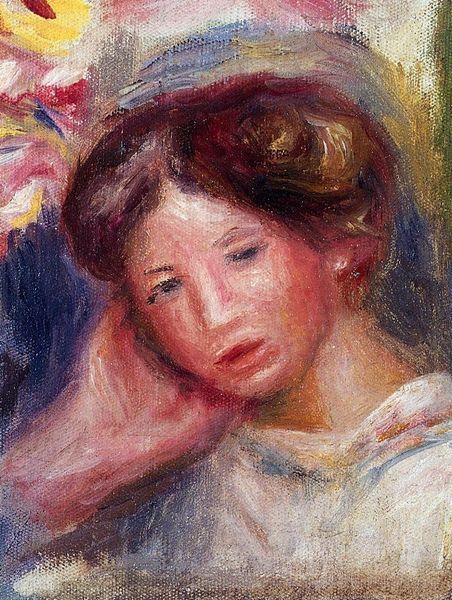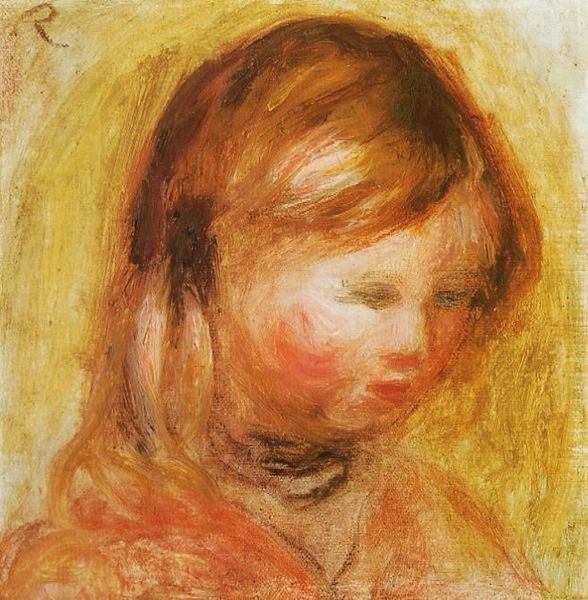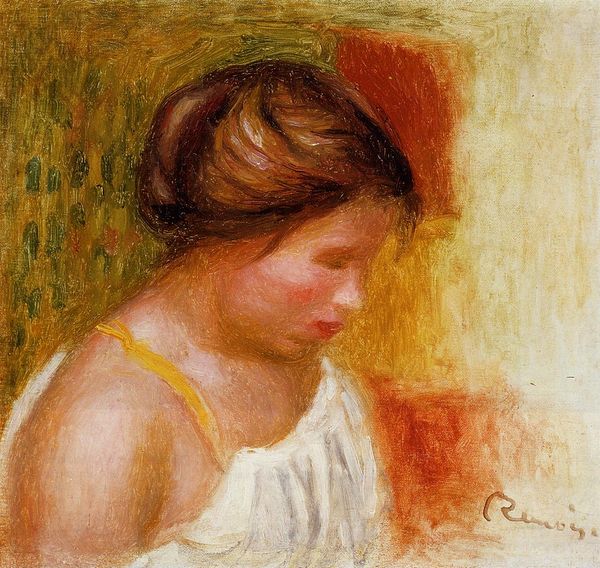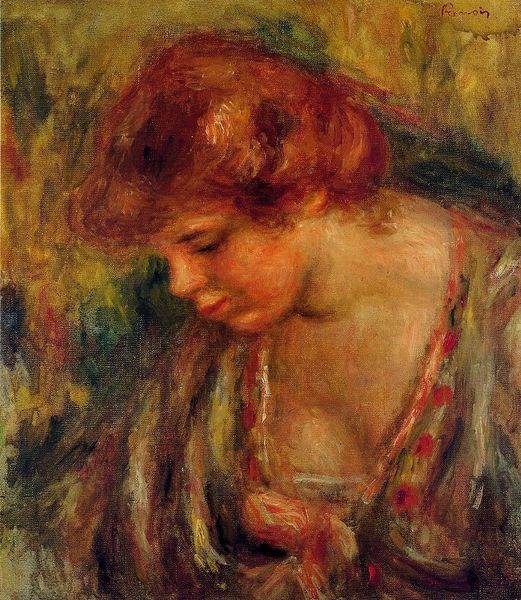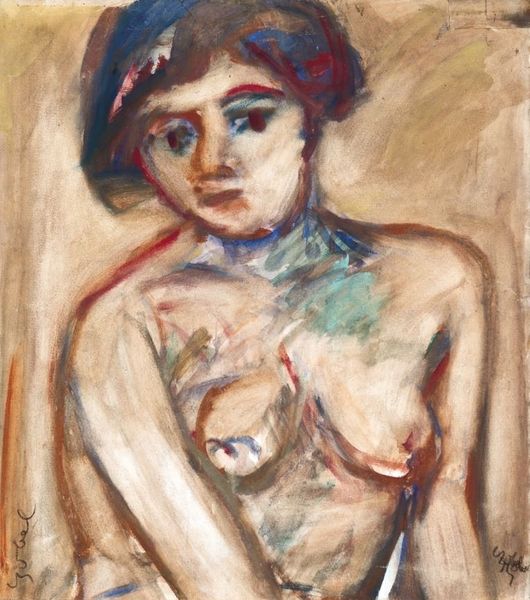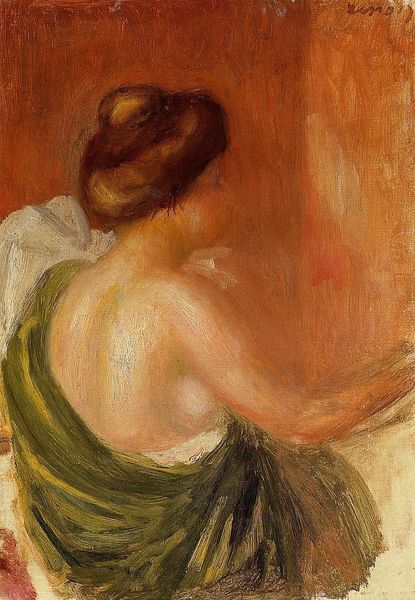
painting, oil-paint
#
portrait
#
self-portrait
#
painting
#
impressionism
#
oil-paint
#
figuration
#
oil painting
#
portrait drawing
Copyright: Public domain
Editor: We're looking at "Head of a Young Girl," painted around 1880 by Pierre-Auguste Renoir using oil paints. It’s a smaller piece, but I’m immediately struck by the soft, almost dreamlike quality, created with these blended brushstrokes. How would you interpret the work, looking at it formally? Curator: What’s immediately apparent is the chromatic harmony—a deliberate arrangement of tones that operate in a delicate range. Renoir orchestrates warm hues—observe the interplay of ochres, siennas, and umbers across the canvas. Notice the application of paint, broken and diffused to give a shimmering effect. How does the contrast between the background and the figure’s flesh contribute to the work’s overall impact, would you say? Editor: I see that the background seems to almost dissolve, which makes her face and bare shoulder become the primary focal points. It's as though he’s capturing a fleeting moment of light and color on her skin. I wonder if he prioritized light over clarity, or maybe even challenged traditional portraiture in some way? Curator: Indeed. The form arises through color and light rather than line. Look closely: is there a sense of volume created in the traditional manner, through chiaroscuro, for example? Or do you observe something different, perhaps an emphasis on surface and the materiality of paint? Editor: I can see what you mean. Instead of sharp lines and obvious shading, Renoir uses small strokes of slightly different colors to build up the form, but without clearly defining the edge of things. It’s much more fluid, less focused on representing an accurate form, and more about evoking the feeling of light. Curator: Precisely. This approach elevates the intrinsic elements of painting, placing greater emphasis on surface texture and chromatic nuance. By attending to the language of paint, the painting approaches something closer to a transcendental object; rather than representation, it is presence. Editor: I learned a lot from just taking time to really *look* at the formal components here! It makes you appreciate Renoir's skill. Curator: And in attending to the compositional and material reality, you engage more fully with the work's aesthetic achievement.
Comments
No comments
Be the first to comment and join the conversation on the ultimate creative platform.
